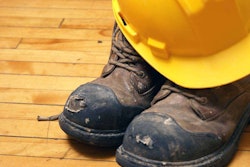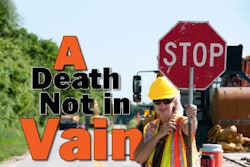 [email protected]
[email protected]By Kirk Landers, Editor Emeritus
A year ago, the National Highway Traffic Safety Administration (NHTSA) raised eyebrows in the road industry with a report showing traffic fatalities in the United States rose a tad more than 3 percent in 2012 after six consecutive years of declines.
The NHTSA’s reported 3.3-percent swing in fatality data is very significant, representing a little more than 1,000 lives lost.
While one would expect accidents and fatalities to increase as the economy recovered from the worst years of the Great Recession, the six-year decline in U.S. traffic fatalities began in 2006, well before the onset of the recession. And while the declines became even steeper in the recession years of 2008 and 2009 – fatalities fell by more than 9 percent each year – the declines continued at modest, but significant rates in the recovery years of 2010 (-2.6 percent) and 2011 (-1.6 percent). Following that trend line, you might have expected casualties in 2012 to be flat.
This spring, the mystery of 2012 deepened when NHTSA’s preliminary estimate of fatalities for 2013 showed fatalities dipping 2.1 percent, almost to 2011 levels. What was there about 2012 that caused such an aberration?
Several facts have emerged since the preliminary 2012 report that may offer insights into how we Americans manage to kill ourselves, if not how to keep us from doing that. What may be the biggest anomaly in 2012 is that the upsurge in fatalities occurred in the first two quarters of the year; in the second half, fatalities were slightly lower than the second half of 2011.
It turns out, in the first quarter of 2012, the United States logged the highest average temperatures ever recorded for the period (the records go back to 1897). In addition, that quarter saw conspicuously large increases in fatalities among motorcyclists, pedestrians and bicyclists. The statistical implication is that unseasonable nice weather saw more Americans driving and recreating in the traditional winter months and that somehow caused an increase in fatalities and crashes.
Other aspects of the NHTSA analysis are interesting, too:
• The number of teenagers in the count of fatalities and crashes has consistently declined, even in 2012.
• More than half (52 percent) of the passenger vehicle occupants killed in crashes in 2012 were not wearing seat belts.
• Passenger vehicle occupant deaths in 2012 were almost flat – up just 1.6 percent from 2011. The largest increases came in large trucks (8.9 percent), motorcycles (7.1 percent), pedestrians (6.4 percent) and bicyclists (6.5 percent).
• Alcohol-impaired drivers accounted for 31 percent of the 2012 fatalities, up 4.6 percent from the previous year. The largest increase was among large truck fatalities, though the numbers for that category are small and subject to great variability.
The positive message in the traffic safety data for 2012 and 2013 is America seems to be holding its safety gains. There’s a negative message, too, though, especially for road professionals: The warm winter of 2012 strongly implies nothing trumps Mother Nature when it comes to safety statistics.














